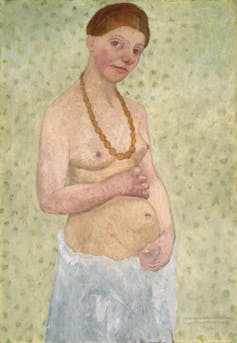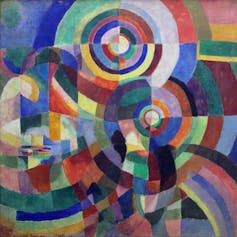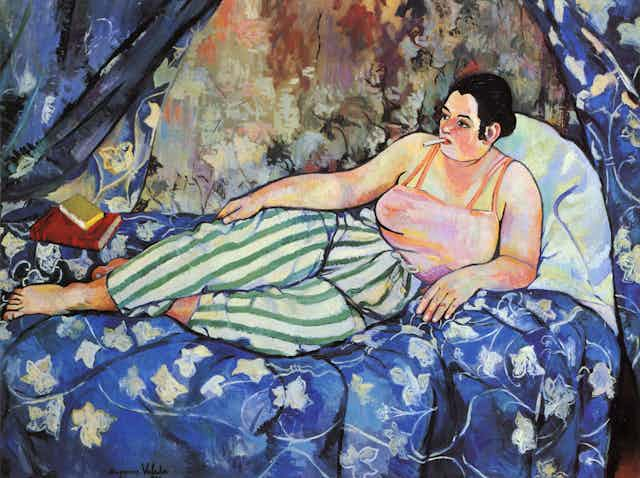The National Gallery recently announced its summer 2023 exhibition, After Impressionism, claiming the show will celebrate the “towering achievements of Cezanne, Van Gogh, Gaugin and Rodin” among others. The response on social media to this announcement was largely, “where are the women?”
Some on Twitter offered suggestions of women who should be included in the exhibition, including Suzanne Valadon, Paula Modersohn-Becker, Gabriele Münter and Sonia Delaunay, to name just a few. The National Gallery tweeted the same text to several of these replies: “We have announced a small number of confirmed loans to the exhibition. This includes Camille Claudel’s Imploration. We will share more loans, including major works by women artists, closer to the opening.”
While it remains to be seen what these works will be, it is clear they are not considered integral to the show, or a significant draw for the public, by the gallery. If they were, they would have been mentioned front and centre in the press release.
That was accompanied by an image of Cezanne’s Bathers (Les Grandes Baigneuses), which depicts a group of nude women. Clearly in 2022, the easiest way for a woman to get on to the walls of the National Gallery is still by being nude.

The National Gallery is somewhat of an outlier among global museums in its continued failure to broaden the narratives it tells through its collection and exhibitions. But its focus on extremely well-known white male artists demonstrates what it considers to be innovative and important – and therefore what it does not.
When women have been blockbusters
The expectation that “blockbuster” shows be about household-name artists is a vicious cycle – artists cannot become household names if they’re not included in big exhibitions. The lack of women in traditional art historical scholarship has led to the belief that there simply weren’t many, or indeed any, important women artists working in Europe in this period, which is entirely false – as the backlash on Twitter highlighted. Yet museums still seem unable to recover them into the canon.
The idea that only household names sell tickets has also been repeatedly debunked over the past decade. The best example is New York’s Guggenheim Museum’s 2018 exhibition of the works of Swedish artist Hilma af Klint, the first major retrospective of the artist’s works in the US – and the first time most people attending the show had seen or heard of her. The exhibition became the museum’s best-attended show ever.
The National Portrait Gallery’s 2019-20 show Pre-Raphelite Sisters and Madrid’s Museo del Prado’s 2020-21 show Uninvited Guests: Episodes on Women, Ideology and the Visual Arts in Spain (1833-1931) both foregrounded women in traditionally male art movements and periods.
Both were the recipients of some criticism, largely arguing that the curators had not gone far enough in centring work actually made by women, rather than simply depicting them. Both shows, however, represent steps towards imagining new methods of disrupting traditional art history narratives.
Still woefully underrepresented in permanent collections
In the autumn and winter of 2020, the National Gallery hosted its first exhibition headlining a female artist. It was a retrospective of the works of the remarkable Renaissance artist Artemisia Gentileschi, one of the few women whose work is held in the gallery’s permanent collection.
Women artists are woefully underrepresented in the permanent collections of major museums around the world – these are the works of art that are owned by museums and hung on the walls year-round, not just during special exhibitions.

The National Gallery, which boasts a collection of more than 2,000 works, owns only 24 works by women, representing just eight women artists. While this ratio is remarkably bad, the National Gallery is not alone in having a profound imbalance.
The arts publications Artnet and arts podcast In Other Words partnered in 2019 to analyse the representation of women in the collections of American museums. They found that between 2008 and 2018, just 14% of work in museum exhibitions was by women and just 11% of museum acquisitions were works by women. These acquisitions and exhibitions are heavily skewed towards modern and contemporary art.
Women artists working before 1900 are far less represented in museum collections. In some cases, their works are in smaller museums or in private collections and, in others, they are untraced or lost. This makes including their work in exhibitions more difficult because it can be harder to find.
Yet despite the fact that women’s work has been less reliably preserved throughout history, a great deal of it still exists. Museums that hide behind the excuse of a “lack” of work by women are perpetuating a lie that has been debunked by innumerable feminist art historians since Linda Nochlin’s famous 1971 essay, Why Have There Been No Great Women Artists?

Writing in 2015, art historian Griselda Pollock explained evidence of women artists is “there in black and white” in exhibition and sales records in the 19th century. “This is the primary evidence. It cannot be contradicted. But it has been consistently ignored by 20th-century art historians and 21st-century museum curators.”
The National Gallery’s continued reliance on outdated art history is a failure of its duty as a steward of the British public’s art collection. Museums, particularly those like the National Gallery which receive significant public funds, have the responsibility to accurately communicate the history and relevance of the objects they own. They should also continue to innovate and respond to cultural changes.
A museum whose collection is less than 1% female is hardly representative of a country whose population is 50% female. Nor is it representative of a history of art which, while still not offering equal opportunities for men and women, certainly fostered an abundance of pioneering women artists.

